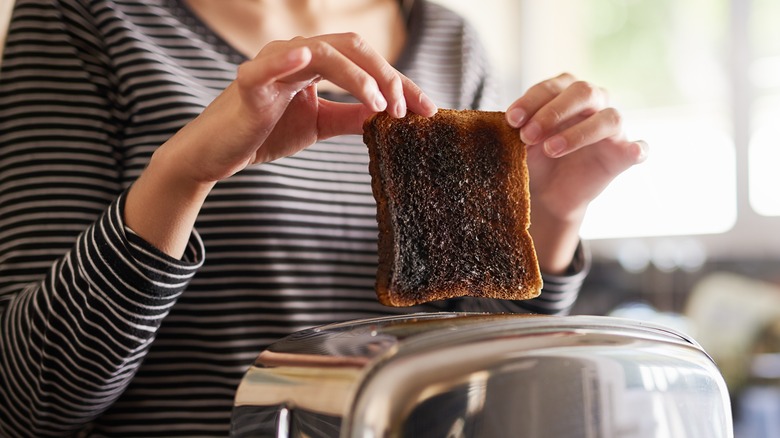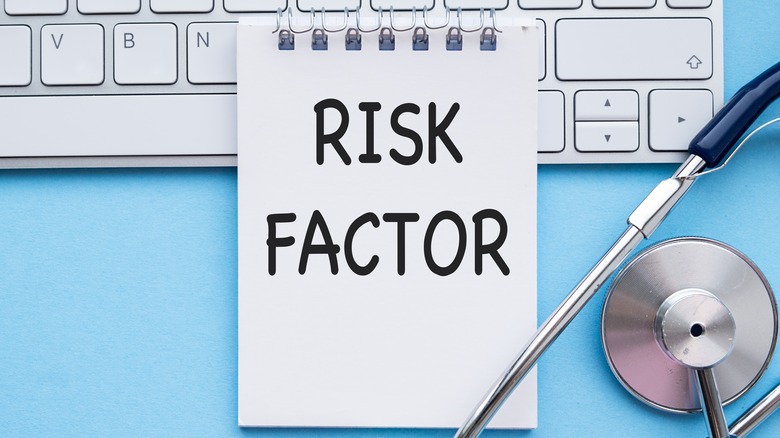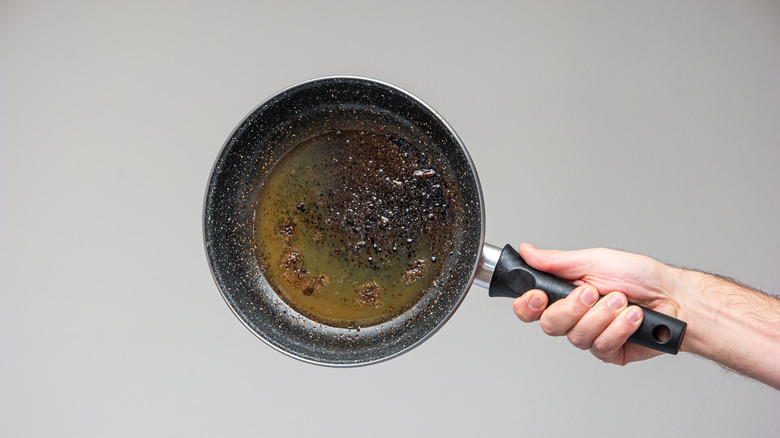Is It Actually Dangerous To Eat Burnt Bread?
Extra-dark toast, charred marshmallows, super-crispy French fries — there's an undeniable appeal to burnt food, so much so that some companies have even joined in on the craze, with Cheez-Its Extra Toasty, dark-roasted peanuts, and Extra Dark Splits pretzels rising in popularity. But could it actually be dangerous to eat burnt bread or any of these other torched snacks?
The short answer is no, but there is a bit more to it than that. Burnt foods are high in a chemical compound called acrylamide, which forms in certain foods when they're fried, roasted, or baked at high temperatures for long periods of time. It's found naturally in potato-based foods and grain products (think crackers and bread) and also in coffee.
The problem with acrylamide is its not-so-great reputation for being associated with an increased cancer risk. It all stems from research dating back to the 1980s, which found that rodents exposed to high levels of the chemical were more likely to develop a few different cancers.
Acrylamide and cancer: What the data say
However, the risk in humans is not proven and requires further research, according to several government and regulatory agencies in both the United States and the United Kingdom. Because of the association demonstrated in the studies involving lab animals, the International Agency for Research on Cancer does classify acrylamide as a "probable human carcinogen," with the US National Toxicology Program determining the substance is "reasonably anticipated to be a human carcinogen," according to the American Cancer Society.
These determinations have understandably made waves. But the fact is that several studies on humans have not found any consistent evidence between "dietary exposure" to acrylamide and cancer risk, according to the U.S. National Cancer Institute.
Weighing all of the available data, consuming foods that might be high in acrylamide is, like most things, an issue of moderation more than anything. "It's more important [to focus on] your overall dietary pattern than isolated foods," chef and licensed dietitian-nutritionist Eva De Angelis told Eating Well. "As a general rule, if you have a balanced diet rich in foods high in fiber, protein and healthy fats with a reduced intake of processed and red meat, and foods high in sugar, fat and salt, having the occasional burnt food is okay."
Avoiding burning your food in the first place
Of course, it's probably best — for your health and your palate — to avoid burning bread or other foods in the first place. We all know that food burns when it is exposed to heat for too long or at temperatures that are too high. Exposure to heat is necessary, of course, to thoroughly cook foods, develop flavor, and achieve the desired color on things like meat, but keep a close eye or you'll be left with the overpowering taste of bitter char.
It might sound basic, but always pay attention to cook times and temperatures. Use timers and adjust heat settings to make sure food is cooked at the correct temperature. Low heat and slow-cooking methods, such as simmering or baking at lower temperatures, can prevent burning.
Your choice of cookware is also essential to avoiding the unintentional burning of food. Different types of pans conduct heat differently, so cooking, for example, an egg in a non-stick pan versus a cast-iron skillet could yield different results. For things susceptible to burning, like sauces or stir-fries, stirring frequently can help distribute the heat and prevent sticking.


